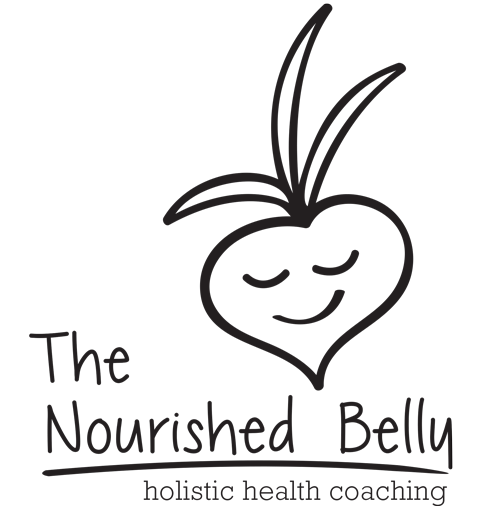If you want ONE thing you can do to improve your health….this might be it. Save your chicken bones. Make your own stock. Bone broth is one of the most amazing foods you can add to your diet. Truly.
Traditionally, bone broth has been used throughout cultures as an ailment for the weak and the sick, and throughout culinary traditions as a way of adding flavor and depth to a dish. It’s a win/win! In ancient cultures, bones and organ meats were prized more than meat itself. They are the most nutrient dense parts of an animal, and therefore, the most nutritious for us.
Benefits of Bone Broth
- High in Minerals: Due to the current food supply and the American state of health, most people are deficient in minerals. Minerals are just as important as vitamins to our daily bodily functions. Bones are a power house of minerals, and through prolonged simmering, we are able to extract all of these precious nutrients. Thomas Cowan, author of A Fourfold Path to Healing, suggests that adding bone broth to our diet is the fastest way to rebuild our mineral deposits.
- An Important Source of Gelatin: Gelatin is extracted collagen and an extremely soothing and nourishing food. It is an excellent digestive aid and it’s extremely healing to our gut, our nervous system and for our entire body. This is the original reason that jello is served in hospitals. Patients were served a gelatin based food, but in the words of Jessica Prentice, worker owner at Three Stone Hearth, the jello served nowadays to patients is a “toxic mimic” of tradition.
- High in Protein: Included in the large amino acid profile of bone broth are glycine and proline.
- Glycine is necessary in creating glucose when we are in need of more energy and is vital in supporting our detoxification pathways (thus, cleansing with only bone broth is a great idea.)
- Proline is essential for the production of collagen, which helps us maintain healthy skin, bones, ligaments, tendons, and cartilage.
Making Your Own Bone Broth
Making your own broth is less time consuming than you might think, and if you have the proper tools (i.e. a crock pot!) it is extremely simple. First off, save your bones in the freezer. Of course, quality always matters, so at the very least you should be buying organic meats with the bone. You can also go to the butcher and ask for bones, they are pretty inexpensive for the amount of nutrition that they provide.
Once you have a nice bag of bones, you are welcome to mix them, but I usually separate chicken from other meats due to flavor. Place them in a large stock pot and cover with water (preferably filtered) and add a splash of apple cider vinegar. The vinegar helps to pull the minerals out of the bones.
Temperature and simmering length are important. The broth should be kept at a simmer, too high of heat will destroy the gelatin. I personally leave the pot covered on a low flame over night and when I am out of the house. The only incident I’ve run into is when I left a window open and the flame went out. Another option is to leave the stock pot in the oven on 200. However, if you have a crock pot, you don’t need to worry about any of this! A crock pot has literally changed the way I cook in the kitchen, so I highly recommend you get one. They are inexpensive and for busy people, they are invaluable.
Ingredients: (Makes roughly 3-4 quarts)
1-2 lbs of bones
2 tablespoons apple cider vinegar
1 medium yellow onion, roughly chopped
4 carrots (you can include tops) roughly chopped
4 stalks celery, roughly chopped
2 bay leaves
Directions:
1) Place the bones at the bottom of a stockpot or Crock-Pot, covering the bones with filtered water.
2) Add the apple cider vinegar. The vinegar will help to pull the minerals from the bones.
3) Bring the broth to a boil and then reduce to a simmer.
4) Follow the cooking times below: Bones should be easily crushed, this means you’ve extracted as much as you can out of them!
Fish (keep the fish heads!): no more than 6 hours
Chicken: 12–24 hours
Lamb and goat: 36 hours
Pork and beef: 36–48 hours
5) For the last 4 hours of cooking, add the onion, carrots, celery, and any other vegetables of your choosing! Using a strainer, funnel the broth into jars. Freeze some (label with the date and kind of broth) and keep some in the fridge for immediate use!
If the bones you are using have a nice amount of collagen and you've kept it at a nice low temperature, the broth should gel nicely when cooled. This is a sign that it is gelatin rich. Great job!
So get started! Start saving your bones! Or get a whole chicken and use the carcass. I just used the turkey carcass to make an amazing stock….the holidays are a great time to try it out!
References:
Cowan, Thomas. (2004) The Fourfold Path to Healing. United States; New Trends Publishing
Fallon, Sally. (2000, Jan 1) Broth is Beautiful. Wise Traditions. Retrieved from http://www.westonaprice.org/food-features/broth-is-beautiful
Prentice, Jessica. (2006) Full Moon Feast; Food and the Hunger for Connection. Vermont; Chelsea Green.

